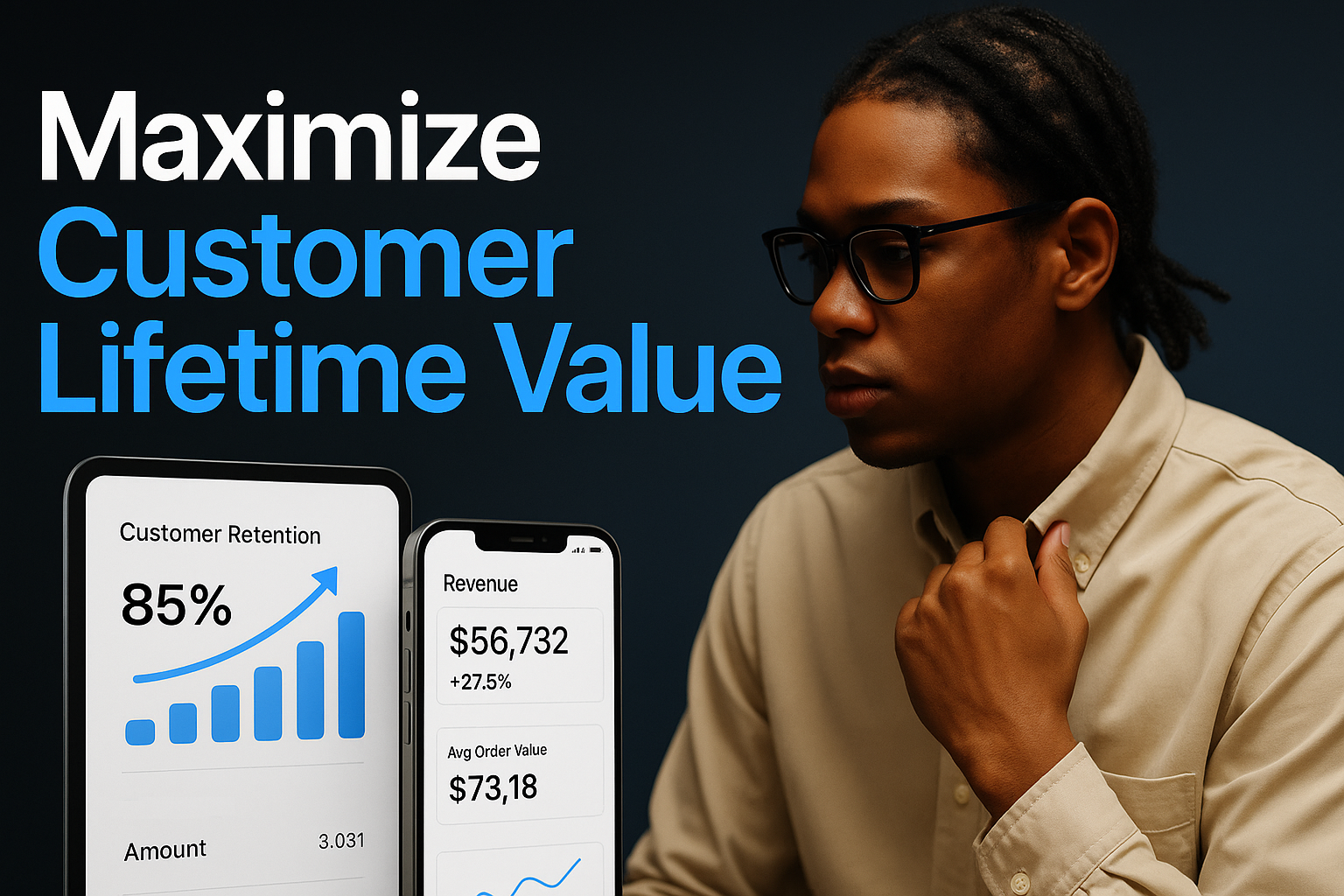5 Proven Strategies to Maximize Customer Lifetime Value for E-commerce Businesses
In today's competitive e-commerce landscape, acquiring new customers is increasingly expensive and challenging. While customer acquisition remains important, the most successful businesses recognize that sustainable growth comes from maximizing the value of their existing customer relationships.
Research shows that increasing customer retention by just 5% can significantly boost profits, making strategies that focus on extending customer lifetime value among the most cost-effective investments for your business.

The Economics of Customer Retention vs. Acquisition
Before diving into specific strategies, let's examine why focusing on existing customers makes financial sense:
1. Lower Acquisition Costs
The cost of acquiring a new customer is typically several times higher than retaining an existing one. With rising digital advertising costs and increasing competition, this gap continues to widen.
2. Higher Conversion Probability
Existing customers convert at significantly higher rates than new prospects. Customers who have made multiple purchases are much more likely to buy again compared to first-time visitors.
3. Greater Average Order Value
Not only do existing customers purchase more frequently, but they also typically spend more per transaction. Loyal customers are also more likely to try new products, creating natural upsell opportunities.
4. Compounding Value Over Time
The value of a customer increases significantly with each purchase. Your most loyal customers often become your most valuable assets, spending considerably more than the average customer.
5 Strategies to Maximize Revenue from Existing Customers
Now that we understand the value of focusing on existing customers, let's explore five proven strategies to increase their lifetime value:
Strategy 1: Implement Tiered Loyalty Programs
Basic loyalty programs are common, but sophisticated tiered programs drive significantly more engagement and repeat purchases by leveraging exclusivity and status motivation.
Key Implementation Elements:
- Value-Based Tiers: Structure tiers based on customer spending or engagement levels
- Aspirational Benefits: Create meaningful differences between tiers that customers genuinely value
- Visible Progression: Show customers how close they are to reaching the next tier
- Experiential Rewards: Include exclusive experiences or early access alongside discounts
Pro Tip: Ensure your highest tier offers truly exclusive benefits that create genuine excitement and aspiration. The perception of exclusivity is often more powerful than the monetary value of benefits.
Strategy 2: Develop Strategic Post-Purchase Engagement
The period immediately following a purchase represents a critical opportunity to establish patterns of repeat business and increase customer lifetime value.
Effective Post-Purchase Touchpoints:
- Personalized Order Follow-ups: Send tailored follow-up messages based on specific purchase categories
- Product Education: Provide usage tips, maintenance information, and creative ideas related to purchased items
- Social Proof Requests: Invite reviews and social sharing at optimal moments in the product experience
- Replenishment Reminders: Create automated reminders for consumable products based on typical usage cycles
Pro Tip: Segment post-purchase communications based on product category, order value, and customer history to make interactions genuinely relevant.
Strategy 3: Create Personalized Shopping Experiences
Personalization has evolved far beyond simply addressing customers by their first name. Today's most effective personalization strategies leverage behavioral data to create truly individualized experiences.
Advanced Personalization Techniques:
- Predictive Product Recommendations: Use AI to recommend products based on browsing behavior, purchase history, and similar customer profiles
- Dynamic Content Presentation: Adjust homepage layouts, featured products, and navigational elements based on customer preferences
- Personalized Incentives: Vary promotional offers based on individual purchase history and price sensitivity
- Behavior-Triggered Campaigns: Create automated sequences that respond to specific customer actions or inactions
Pro Tip: Focus personalization efforts on your high-value customer segments first, where the return on investment will be greatest.
Strategy 4: Implement Strategic Cross-Selling and Upselling
Thoughtful cross-selling and upselling strategies can significantly increase average order value and customer lifetime value when implemented correctly.
Effective Approaches:
- Complementary Product Recommendations: Suggest items that enhance the value or functionality of products already in the cart
- "Complete the Look" Recommendations: Show how additional items work together with previously purchased products
- Premium Alternative Offerings: Present higher-value options with clear articulation of the additional benefits
- Bundle Value Propositions: Create package offers that provide better value than purchasing individual items
Pro Tip: Focus cross-selling and upselling efforts on making genuinely helpful suggestions that enhance the customer's initial purchase intent, rather than pushing unrelated products.
Strategy 5: Transform Your E-commerce Store into a Mobile App
Converting customers from your website to a dedicated mobile app creates profound shifts in purchase behavior and customer lifetime value.
Key Benefits of App-Based Customer Relationships:
- Enhanced Engagement: App users engage with brands more frequently than website-only customers
- Improved Conversion: Mobile apps convert at higher rates than mobile websites
- Reduced Cart Abandonment: Apps experience lower cart abandonment rates than mobile websites
- Direct Communication Channel: Push notifications achieve significantly higher open rates compared to emails
Pro Tip: With platforms like Taptool, you can launch a fully customized mobile app in as little as one week without the traditional costs and complexity of app development.
Case Study: Fashion Retailer Transformation
A mid-sized fashion retailer implemented these customer lifetime value strategies with the following results:
- Customer Data Analysis: Identified key patterns that predicted long-term customer value
- Loyalty Program: Implemented a three-tier program focusing on exclusive early access and personalized styling
- Post-Purchase Engagement: Created product care guides and styling inspiration specific to purchased items
- Mobile App Implementation: Launched custom app with one-click reordering and style preferences
- Results: Significant increases in repeat purchase rates, customer value, and reductions in acquisition costs
Conclusion
In today's competitive e-commerce environment, maximizing customer lifetime value isn't just a strategy for incremental growth—it's essential for sustainable business success. The most successful businesses recognize that their existing customer base represents their greatest asset and growth opportunity.
By implementing these five proven strategies—tiered loyalty programs, post-purchase engagement, personalized shopping experiences, strategic cross-selling, and mobile app adoption—you can significantly increase the lifetime value of your customers while reducing your reliance on increasingly expensive acquisition channels.
Remember that small improvements in customer retention and purchase frequency compound dramatically over time, making customer lifetime value optimization one of the highest-ROI investments your business can make.
To learn more about how Taptool can help you implement these strategies and transform your e-commerce business, check Taptool App.
